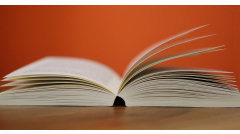Welcome to a fun journey filled with learning and excitement! Tracking progress with sight word flash cards is not just an educational task; it's an adventure that can enhance your child's reading skills and confidence. By introducing engaging techniques and creative strategies, you'll transform the learning process into a game that your child will look forward to playing.
These flash cards serve as a fantastic tool to help children recognize and utilize essential sight words. As they master these words, you're not just tracking progress; you're building a solid foundation for a lifelong love of reading. So, gather your flash cards and get ready to dive into a world of imagination and growth!
Introducing the ultimate resource for young learners — Sight Word Flash Cards! Designed to simplify the process of learning essential sight words, these cards are perfect for parents and educators alike. Each card features brightly colored images and easy-to-read text, making them an inviting tool for children to enhance their reading skills. Ideal for both home and classroom use, this set offers an engaging and interactive way to practice sight recognition. With a focus on making learning fun, these flash cards empower children to succeed and build their confidence as they embark on their reading journey.
Establishing a Baseline
Before diving into the effective use of Sight Word Flash Cards, it’s essential to establish a clear baseline of the current knowledge level your child possesses regarding sight words. This initial assessment can significantly influence how you approach vocabulary development and improvement. To conduct this evaluation, consider creating a simple list of common sight words—words like "the," "and," "it," and "to" are excellent starting points. You can refer to lists commonly used in educational settings, such as the Dolch or Fry sight word lists, which provide a comprehensive selection of essential words based on grade levels.
Begin by presenting the flash cards one by one to your child. Ask them to read each word aloud. Take note of the words they recognize immediately, along with those that take them longer to read or that they cannot identify at all. This exercise helps you quantify their strengths and weaknesses in sight word recognition. For a more structured approach, you can also have your child write down or spell out the words they know as a way to gauge their recall ability. By keeping a record of the results, you'll have a clear picture of where they stand and what specific areas require further focus and repetition.
- Use common sight word lists for structured assessment.
- Note both recognized and unrecognized words for clarity.
- Incorporate spelling and recall into your evaluation for depth.
Setting Up a Schedule
Creating an effective study schedule for learning sight words using flash cards can greatly enhance a learner's reading abilities. Begin by assessing the age and attention span of the learner, which will guide you in determining the frequency and duration of practice sessions. For younger children, such as those in preschool or kindergarten, aim for short and engaging sessions lasting about 5 to 10 minutes. Children this age have shorter attention spans, so incorporating more frequent, bite-sized sessions can lead to better retention of sight words. As they grow older and their attention spans increase, you can gradually extend these sessions to 15-20 minutes.
Draft a weekly schedule highlighting specific times dedicated to practicing with sight word flash cards. It may be beneficial to establish a consistent routine, such as revisiting the flash cards every morning before school or following snack time in the afternoon. Here are some tips for structuring your schedule:
- Incorporate various activities that keep the sessions lively, such as games or visual aids alongside flash cards.
- Rotate through different sets of words to avoid monotony and to promote varied vocabulary exposure.
- Utilize a mix of repetition and review to reinforce memory; this could mean revisiting the same cards multiple times a week, while also mixing in new words.
- Track progress by using a chart or checklist, allowing learners to visually see their growth.
Creating a Progress Chart
Developing a progress chart for tracking sight word mastery with your Flash Cards: Sight Words can be both an engaging and effective tool for reinforcing learning. Begin by designing a simple chart that will fit your needs. You can utilize a notebook, poster board, or even a spreadsheet on your computer. The chart should have clear headings including the date, sight words that were recognized, and a notes section to record any challenges faced or breakthroughs achieved during each session. This structured approach not only enhances the learning experience but also allows for parents and educators to see visible progress over time.
When filling out the chart, consider the following elements:
- Date of the session to track frequency.
- List of sight words practiced, making sure to highlight new or mastered words.
- Notes section for any particular challenges the learner faced or successes they celebrated.
- A box for additional comments, such as book recommendations or fun ways to incorporate sight words into daily activities.
This comprehensive recording method promotes an organized way to visualize growth, encourages consistency in practice, and allows for adjustments in teaching tactics as needed.
- Periodically review the progress with the learner to motivate and inspire them.
- Celebrate milestones to make the learning journey enjoyable.
Incorporating Game Elements
Transforming sight word flash card learning into an engaging game can captivate young learners and enhance their retention of these essential words. One effective method is to create a memory game where the sight word flash cards are placed face down in a grid. Children take turns flipping two cards, trying to find matching pairs. Not only does this build their memory skills, but it also encourages them to call out the words when they make a match, reinforcing their recognition. For added excitement, include a timer to challenge children to find pairs within a certain time, fostering a sense of urgency that can lead to better focus.
Another entertaining approach is to turn the flash cards into a scavenger hunt. Write sight words on cards and hide them around a designated area. As children find each card, they must read the word aloud and use it in a sentence. This game not only promotes physical activity but also helps with context recognition, allowing learners to grasp how sight words function in everyday use. Incorporating a points system keeps the competition light and encourages repeated practice without it feeling like a chore.
- Memory Game: Match pairs of sight word cards.
- Scavenger Hunt: Find cards and use words in sentences.
- Flash Card Bingo: Create bingo cards with sight words and mark them as they are called out.
- Word Relay: Set up a relay race where children must run to grab a card, read it aloud, and return to their team.
- Sight Word Toss: Throw a soft ball at the cards placed on the floor and read any card the ball lands on.
Parental Involvement Techniques
Engaging parents in their child's journey with sight word flash cards can significantly boost learning outcomes. To create an environment where children thrive, it’s crucial that parents actively participate, offering guidance and support during practice sessions. Parents can transform learning sessions into enjoyable and productive experiences. One effective method is to schedule regular practice times. Establishing a routine helps children anticipate and look forward to these learning moments, making them feel more confident and excited about their progress. For instance, dedicating 10-15 minutes each day after school to review the flash cards not only solidifies their recognition but also reinforces the importance of education in their daily life.
Active participation during these sessions can take many forms. Parents could use the flash cards to create games, turning a simple review into a fun competition or cooperative play. For example, they might divide the cards into different categories, engaging their child in sorting or building sentences using the words. Positive reinforcement is essential; celebrating successes, no matter how small, encourages children to keep pushing forward. Additionally, parents should ask open-ended questions during practice to stimulate critical thinking and make learning interactive. Incorporating these strategies fosters a collaborative atmosphere where both parent and child can thrive together.
- Establish a dedicated learning space for flash card review.
- Introduce fun activities related to the words being learned.
- Use diverse teaching methods to cater to different learning styles.
Utilizing Digital Tools
Integrating digital tools with sight word flash cards can enhance the learning experience, making tracking progress more efficient and engaging. Consider using apps like **Quizlet**. This platform allows you to create digital flashcard sets that can be accessed on various devices. With Quizlet, learners can practice sight words through games and tests that automatically track their performance over time. You can easily see which words your child struggles with, allowing you to tailor your flash card sessions to focus on these challenging words. Moreover, Quizlet’s progress tracking feature gives you insights into how quickly and accurately your child recognizes each sight word.
Another excellent option is **Seesaw**, a digital portfolio tool. Seesaw allows children to document their learning journey. You can upload videos of your child reading their flash cards or even create a digital journal where they can explain the words in their own words. This not only helps track progress but also reinforces learning through creative expression. Kids love the interactive elements of Seesaw, making them more likely to stay engaged in their sight word practice.
- Utilize Quizlet's games and tests for diverse learning methods.
- Track performance history on Quizlet for customized lessons.
- Use Seesaw for visual documentation and creative learning outputs.
- Encourage student-led teaching by having kids explain words in Seesaw.
- Integrate both tools for a comprehensive learning strategy.
Regular Review Practices
Regular review of sight words using Flash Cards: Sight Words is crucial for reinforcing learning and ensuring long-term retention. The brain benefits significantly from spaced repetition, which allows information to settle and become more ingrained. To make the most out of your review sessions, establish a consistent schedule to revisit the words previously learned. For instance, a solid method is to include the following review intervals:
- Daily review of recently learned words for 5-10 minutes
- Weekly check-ins with the full set of sight words, allowing for a longer session of 15-20 minutes
- Monthly deeper dives, revisiting words that still pose a challenge
Incorporating various techniques during these review sessions can enhance engagement and effectiveness. Mix up activities to keep interest high and stimulate different learning styles. Flash cards can be used in games like matching, memory, or timed flash challenges. Encourage children to pronounce the words aloud, write them down, or even create sentences with them. This multi-faceted approach reinforces learning on several levels and ensures that the sight words remain fresh in their minds.
- Encourage peer or family participation for a fun environment
- Track progress by marking off mastered words on a chart
- Use themed cards to relate sight words to real-life contexts
Related Products
Celebrating Milestones
Recognizing achievements in a child's learning journey is incredibly significant. Each time a child masters a set of sight words using Sight Word Flash Cards, they gain not only confidence but also a sense of accomplishment. These moments provide opportunities for encouragement and can instill a lifelong love for reading. When children see that their hard work is acknowledged, it enhances their motivation to tackle even more challenging words in the future. Celebrating these milestones reinforces positive learning behaviors and can make the process enjoyable and rewarding for both children and their parents.
To celebrate when a certain number of sight words have been mastered, consider incorporating the following ideas:
- Create a colorful "Sight Word Mastery Chart" that visually tracks the child's progress, with stickers or markers for each set of words learned.
- Host a mini celebration at home, complete with themed decorations, and allow the child to share their favorite words with family members.
- Offer small rewards, such as a favorite snack, extra playtime, or a new book, which can motivate them to keep progressing.
- Organize a fun and interactive game night where the focus is on the mastered sight words, turning learning into a playful competition.
- Utilize social media to share the child's achievements with friends and family, helping them receive broader recognition.
Adjusting Difficulty Levels
Tracking progress with Sight Word Flash Cards is essential for fostering a child's literacy development. As children become more comfortable with their current set of words, it's beneficial to gradually introduce more challenging words and concepts. Start this process by keeping a record of the words they’ve mastered. Once they confidently recognize a set of sight words, consider rotating in new words that are slightly more sophisticated or that have similar phonetic patterns to reinforce learning. This method not only bolsters their vocabulary but also maintains their interest and motivation.
To effectively adjust difficulty levels, employ the following strategies:
- Introduce new words in groups of three to five, ensuring that they are related in meaning or function. This can help them make connections between words.
- Incorporate review sessions for previously learned words. This will reinforce retention while simultaneously revealing areas that may require additional focus.
- Vary the pace of drills—mix up rapid recognition with thoughtful pronunciation to enhance both speed and comprehension.
- Use context to increase complexity. For example, create simple sentences using new sight words, prompting the child to read aloud. This approach makes them active participants and helps them understand word usage in context.
As mastery improves, consider incorporating interactive and fun elements into learning sessions:
- Utilize games such as memory matching, where children have to match words with pictures, to make reviewing enjoyable.
- Encourage self-assessment by having them track their progress on a chart, giving them a visual representation of their achievements.
- Introduce variations in the format, such as digital flashcard apps that may offer quizzes or timed challenges for additional learning engagement.
Sharing Progress with Educators
When utilizing sight word flash cards, maintaining a transparent dialogue with educators about your child's progress is essential. Begin by documenting your child's daily or weekly attempts with the flash cards. This can include the number of words mastered, the frequency of repetitions needed, and any new strategies that were employed during practice. Sharing these specifics provides educators with an in-depth understanding of your child’s learning trajectory. Regular updates can help teachers tailor their instruction to further support your child's growth.
Consider utilizing various forms of communication when sharing progress. Written notes, electronic messages, or scheduled meetings can all serve as effective methods. Highlighting particular challenges, such as specific sight words that remain troublesome, gives educators a clearer picture of where additional assistance may be required. You might also share successful practices you’ve discovered at home, which can reinforce the child’s learning experience within the classroom.
- Detail progress in mastering sight words, mentioning both successes and unfinished targets.
- Provide examples of effective learning techniques practiced at home.
- Ask educators for additional resources or recommendations based on your child's unique journey.
- Encourage a team approach; collaboration between home and school enhances learning.
- Be open to feedback from educators, as they may offer insights or strategies that could further benefit your child.
Why We Chose This Product
Choosing to highlight sight word flash cards in this guide comes from understanding their vital role in early literacy development. These cards aren't just pieces of paper; they are gateways to unlocking a child's ability to read independently and confidently. Witnessing the excitement in a child's eyes as they recognize words for the first time is truly rewarding for both the teacher and the learner.
- Enhances vocabulary retention
- Encourages regular practice
- Fosters independent reading skills
Through playful interaction and consistent practice, flash cards become an essential part of your educational toolkit. That's why we dedicated this guide to mastering the art of tracking progress with sight words, ensuring your journey is as enjoyable as it is educational!
Introducing the ultimate resource for young learners — Sight Word Flash Cards! Designed to simplify the process of learning essential sight words, these cards are perfect for parents and educators alike. Each card features brightly colored images and easy-to-read text, making them an inviting tool for children to enhance their reading skills. Ideal for both home and classroom use, this set offers an engaging and interactive way to practice sight recognition. With a focus on making learning fun, these flash cards empower children to succeed and build their confidence as they embark on their reading journey.










